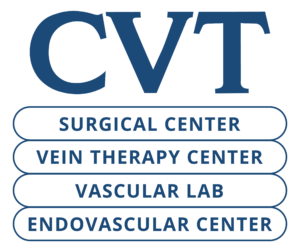Critical Limb Ischemia (CLI) is a severe form of peripheral arterial disease (PAD), where blood flow to the extremities, typically the legs, is significantly reduced. CLI is the advanced stage of PAD, characterized by a severe obstruction of the arteries that markedly reduces blood flow. This reduction in blood supply poses a significant threat to the health and well-being of those affected – leading to various complications, including pain, non-healing wounds, and even tissue loss.
Recognizing the Symptoms of CLI
Understanding Critical Limb Ischemia begins with recognizing its symptoms. The most common signs include:
- Pain at rest – Individuals with CLI often experience pain even when at rest. This pain can be severe and is typically located in the feet or toes.
- Non-healing wounds – Due to inadequate blood supply, wounds on the feet or legs may take a prolonged time to heal or may not heal at all.
- Skin changes – CLI can cause noticeable changes in the skin, such as a bluish or pale discoloration, and the skin may become thin and shiny.
- Temperature changes – The affected limb may feel cooler than the rest of the body, indicating compromised circulation.
What Causes CLI?
Understanding the causes of Critical Limb Ischemia is crucial for effective prevention and management. Primary causes of CLI include:
- Atherosclerosis – The most common cause of CLI is atherosclerosis, a condition where fatty deposits (plaque) build up in the arteries, restricting blood flow.
- Blood clots – Clots can form within blood vessels, further narrowing or blocking the arteries.
- Diabetes – Individuals with diabetes are at a higher risk of developing CLI due to the impact of the disease on blood vessels.
- Smoking – Tobacco use is a major risk factor for PAD and CLI, as it accelerates the progression of atherosclerosis.
- High blood pressure – Uncontrolled hypertension can damage blood vessels over time, contributing to the development of CLI.
Seeking Diagnosis and Treatment of CLI
CLI is a serious medical condition that requires prompt attention and intervention. By understanding its symptoms and causes, individuals can take proactive steps to reduce their risk and seek medical help if needed.
As with many health issues, early diagnosis and intervention are essential in managing CLI. Various diagnostic tests, such as angiography and Doppler ultrasound, can help identify the severity of the condition. Treatment options may include lifestyle changes, medications to manage risk factors, and, in severe cases, surgical procedures like angioplasty or bypass surgery.
Critical Limb Ischemia (CLI) Treatment at CVT
At CVT Surgical Center, our practice is committed entirely to providing the most advanced treatment of vascular issues, including CLI. CVT Surgical Center has been a leader in the care of vascular disorders since 1957. Drs. Mike Davis, Michael Conners, James McNeil, Gulrez Mahmood, and Matthew Abate are board-certified in treating peripheral vascular disease and offer state-of-the-art treatments.

